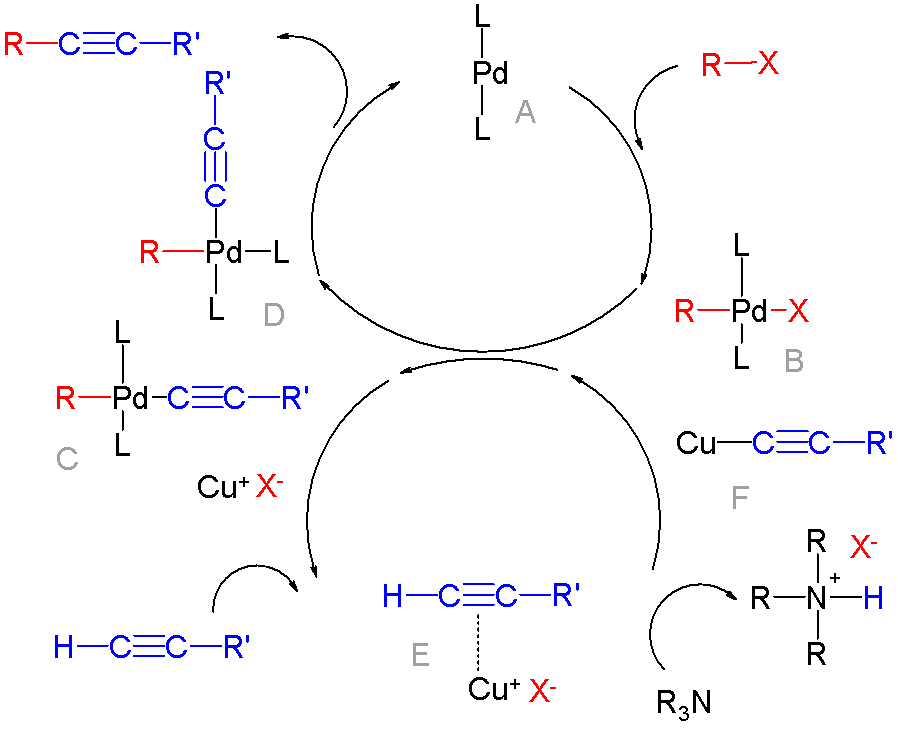|
Murahashi Coupling
The Murahashi Coupling is a cross coupling reaction. The coupling partners are organolithiums and organic halides. Transition metal catalysts are required. The reaction was first reported by Shun-Ichi Murahashi in 1974. This reaction is notable for using organolithiums as opposed to other cross-coupling reactions which utilize various metal-carbon compounds (metal = tin, magnesium, boron, silicon, zinc). Since the production of these other coupling reagents relies heavily upon organolithiums (especially in the case of organozinc and organomagnesium compounds), in bypassing these intermediates, this process is much more efficient. It has further been shown that the Murahashi reaction proceeds with greater selectivity, faster reaction times, and lower reaction temperatures than other similar coupling reactions while maintaining similar or higher yields. History Murahashi first reported C(sp2)—C(sp3) coupling in 1974. These reactions were not metal catalyzed but were promot ... [...More Info...] [...Related Items...] OR: [Wikipedia] [Google] [Baidu] |
Cross Coupling Reaction
In organic chemistry, a cross-coupling reaction is a reaction where two different fragments are joined. Cross-couplings are a subset of the more general coupling reactions. Often cross-coupling reactions require metal catalysts. One important reaction type is this: : (R, R' = organic fragments, usually aryl; M = main group center such as Li or MgX; X = halide) These reactions are used to form carbon–carbon bonds but also carbon-heteroatom bonds. Cross-coupling reaction are a subset of coupling reactions. Richard F. Heck, Ei-ichi Negishi, and Akira Suzuki were awarded the 2010 Nobel Prize in Chemistry for developing palladium-catalyzed coupling reactions. Mechanism Many mechanisms exist reflecting the myriad types of cross-couplings, including those that do not require metal catalysts. Often, however, cross-coupling refers to a metal-catalyzed reaction of a nucleophilic partner with an electrophilic partner. In such cases, the mechanism generally involves reductive elimin ... [...More Info...] [...Related Items...] OR: [Wikipedia] [Google] [Baidu] |

